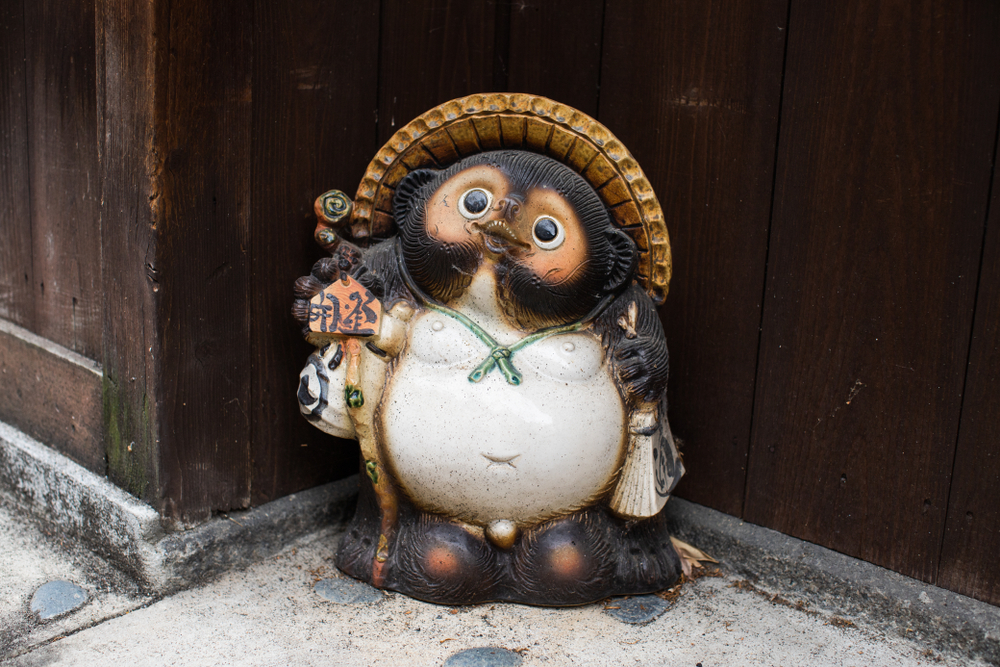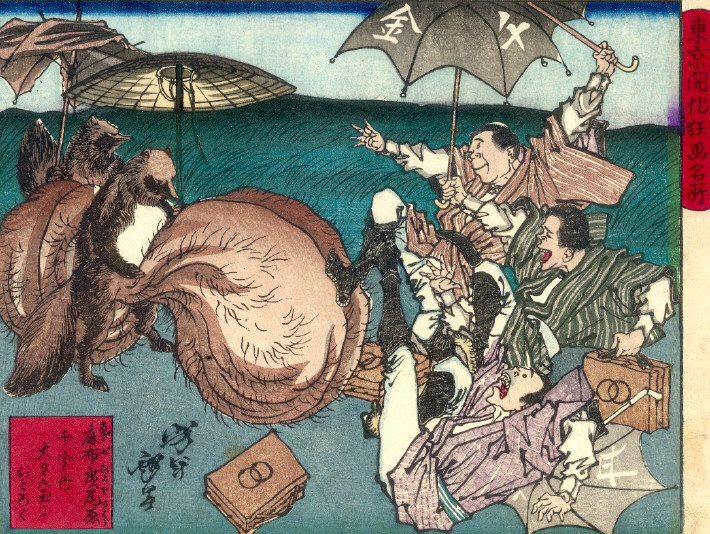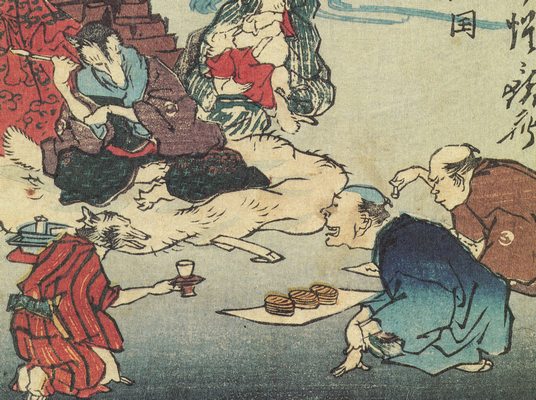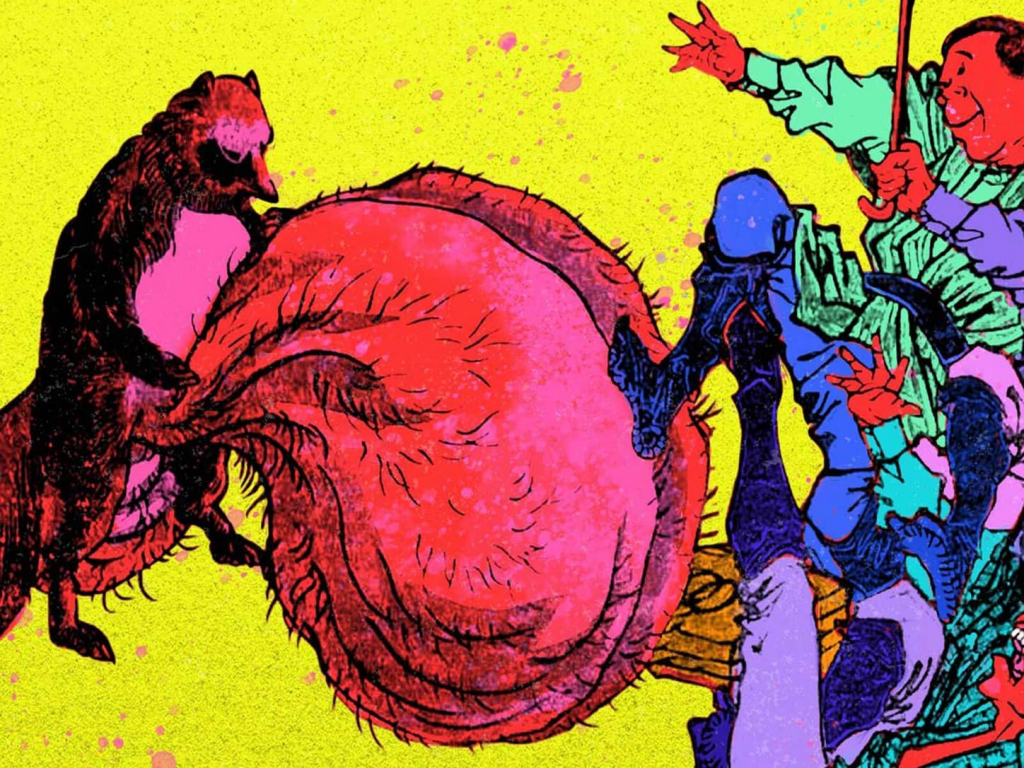A lot of the most popular Japanese souvenirs started out as good luck charms meant to bring prosperity to business owners, like with the maneki neko “waving cat” figurines or omamori talismans specifically for attracting money. But the one supernatural money magnet you will almost never see on Japanese souvenir store shelves are figures of the tanuki “racoon dog” equipped with scrotums the size of beanbag chairs.
However, you will find plenty of them in front of Japanese stores hoping that the sight of giant animal happy sacks will somehow translate into giant sacks of money for them. Let’s talk about how this ballsy art trend first started.

Morumotto / Shutterstock.com
What’s a Tanuki and Are Their Testes Really That Big?
The tanuki is also known as the raccoon dog, despite being neither of those things. It’s a distinct animal in its own right native to Japan where you can still see it in the wild. You might know it from the Animal Crossing games thanks to the character of Tom Nook. Although it’s called a raccoon outside Japan, his English name still points to his true identity. And, no, the game designers thankfully never had to sit down and debate whether to make Tom look like he’s smuggling melons in his pants because real tanuki actually have relatively small testicles. Why then are Japanese stores displaying figures that give these animals the strangest body image issues ever?
The Magic Power of Family Jewels
It all goes back to a funny linguistic quirk. Testicles have many different colloquial names around the world like “nuts” in the West or “eggs” in Central and Eastern Europe. In Japan, they are called “kintama,” which means “gold,” “gold balls” or “gold and jewels,” not unlike the Western expression “family jewels.” It didn’t take a long time for a storeowner or whomever to eventually make the connection that big sacks = big stacks (of money). Kind of a low-hanging fruit but they went with it.

Tsukioka Yoshitoshi, ”Rainy Day Tanuki”, 1881
OK But Why Specifically Well-Endowed Tanuki?
If all it takes to make it in Japan is to literally have big balls, wouldn’t any statue that’s a mix between scrotal elephantiasis and indecent exposure do the trick? Actually, no. In Japanese culture, it has to be a tanuki. The most popular theory as to why, as championed by researcher Shigeo Owaku, goes back to metal workers in Kanazawa Prefecture many centuries ago. Apparently, to make gold leaf sheets, these craftsmen would put gold between tanuki skin to hammer it flat, and because the skin was so durable, it allowed them to stretch the metal unbelievably thin. Then the gold bit (as in “kintama”) got mixed with the notion of stretching and skin – and landed safely on a giant cushion of tanuki testes.
There is also the role that tanuki play in Japanese mythology. Together with foxes and cats, they are one of the Big Three shapeshifters in Japanese legends. One of their favorite pastimes is to visit bars and brothels and pay with old leaves magically disguised as money. Their playful reputation from stories like these definitely helped popularize the image of tanuki with balls that double as flotation devices, which is as funny to Japanese people as it is to us. Turns out ball humor is mostly universal.

Kawanabe Kyosai (1831–1889)
We’re Still Only Scratching the Surface of Giant Tanuki Balls
Japanese myths are actually light on tanuki testes. The country’s art, though, seemingly cannot get enough of them. Starting from around the Edo period (early 17th century), tanuki doing more amazing thing with balls than Ronaldo sort of became its own art style. There are paintings of tanuki using their massive, stretchy scrotums as sitting pillows, bludgeons, rain coats, you name it. It was simply a nice artistic shorthand for their power of shapeshifting that also focused on their most famous attribute.
And this trend continues to this day. One of the most recent examples of magic tanuki testicles comes from the famous Studio Ghibli and their 1994 movie Pom Poko about tanuki going to war armed with their… flesh balloons. Some trends just refuse to deflate.









